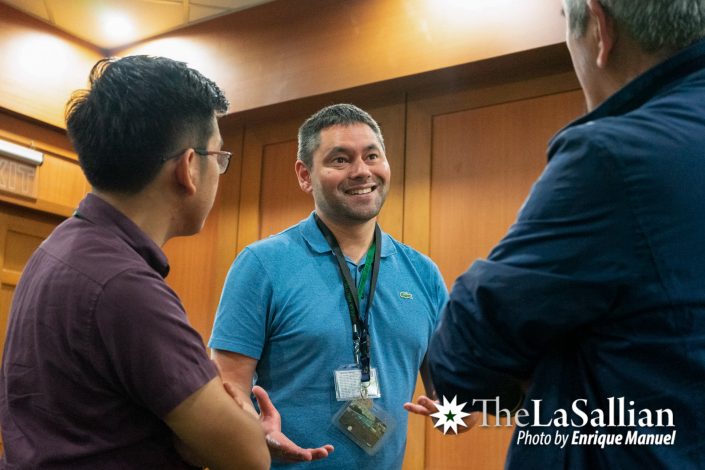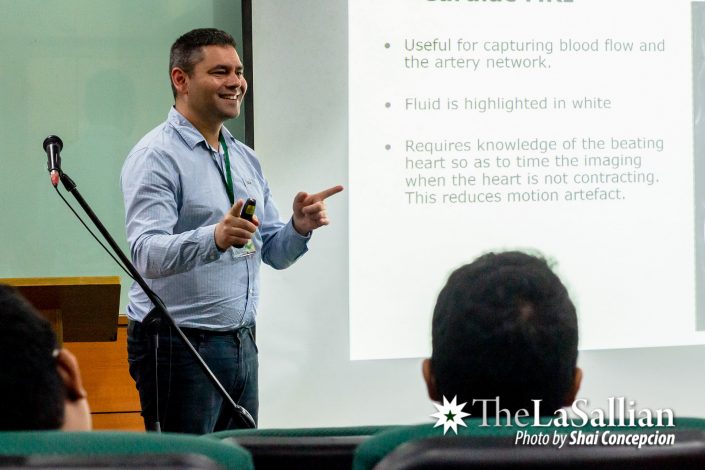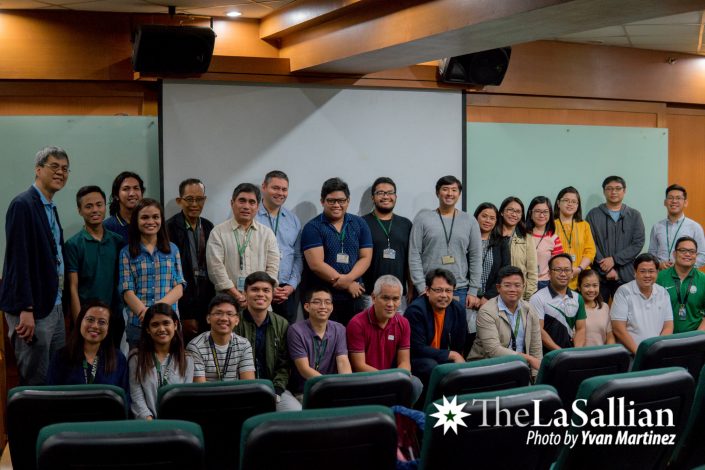From November 6 to 8, the DLSU Institute of Biomedical Engineering and Health Technologies held the Seminar/Workshop Series on Biomechanics at the Shell Companies in the Philippines Audio Visual Room, second floor of Velasco Hall. The lecture series—which featured Dr. Justin Wade Fernandez, an Associate Professor from the University of Auckland in New Zealand—discussed computational models and analysis of mechanisms in Biomechanics.
Aimed to foster research on the growing field of Biomedical Engineering in the country through initiating collaboration between local and foreign institutions, the lecture series highlighted topics on Orthopedics and Muscle Mechanics; gait analysis and motion capture; and statistical shape analysis in Biomechanics.
Biomechanics assisting rehabilitation
Our bodies are under constant stress due to the forces we are exposed to—whether it is the gravity that pulls us down or the strain our body absorbs in every step. Combining ideas from Engineering and Physiology, Biomechanics seeks to explore how our bodies respond against these forces. Research in the discipline has made great strides—from improving human performance to pioneering our understanding of the impact of external forces on bone health. The contributions of Biomechanics to our knowledge on Physiology has brought about innovations in designing implants, which is a vital factor in a patient’s rehabilitation.

Implants are medical devices designed for the purpose of replacing a missing structure or supporting a damaged structure inside the human body. The significance of implants lies in their ability to restore physiological functions of disabled patients and their being a replacement for deteriorating body tissues.
In one of his lectures, Fernandez reviewed bone implants and the importance of their material design. Implants should imitate the biomechanical properties of the replaced tissues to prevent any complications, as incompatible materials have a high risk of corrosion and haphazard design choices can aggravate friction which causes bone loss around the implant. Fernandez explained, “The implant starts to become loose, and that is when you get failure.” Moreover, implants have a finite lifespan since they are subjected to stress throughout the duration of their use.
“You are trying to restore function and mobility; for a lot of people, the reason why they have replacements is [so] that they can carry on with the activities they want to do in life,” he emphasized.

To analyze the materials for bone implants, Fernandez used a computational model to determine the stresses inside the cross-section of a bone with an attached implant. Different materials used in implants are measured by how they wear over time and their strength and stiffness in relation to the bone. This material analysis is critical to create appropriate implants that are suited for patients.
A quantitative look at shapes
Analyzing anatomical structures is important especially in diagnosis and intervention, said Fernandez. In medical research, finding variations between various anatomic shapes is necessary in discovering trends in our physiology—like the changes in the structure of nasal passages from baby to puberty.
The speaker presented a statistical method of analysis on anatomical shape variations called Principal Component Analysis (PCA). Instead of just empirically observing shapes, PCA quantitatively compares the variations in features of anatomical structures. “Now [that] you all have a bunch of geometries…you can do your principal component analysis and find what the mean shape is,” Fernandez elaborated on the function of PCA.
“The PCA is not just limited in analyzing anatomy, but also provides feedback and diagnosis for immediate intervention,” Fernandez noted. PCA’s capacity to provide quantitative data is valuable in informing patients—giving more rigor and evidence behind doctors’ recommendations rather than solely relying on a doctor’s observations. “Hopefully [practicing clinicians find something they] can adapt or use in [their] work, [and] find ways [to communicate] to their patients in a more graphical way,” he expressed.

The three-day seminar series ended with a closing remarks from Engr. Voltaire Dupo, a research associate working on the Agapay project. “We do hope that in the near future, we will start to establish the Biomedical industry in the Philippines,” Dupo shared, hoping that the seminar series would help in that endeavor.
with reports from Jasper Buan
